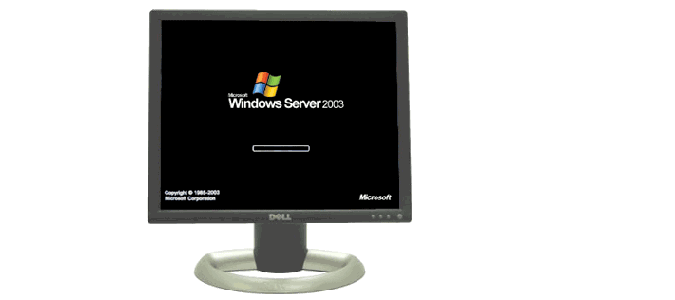What’s New in Windows Server 2003 R2
Windows Server 2003 R2 extends the Windows Server 2003 operating system, providing a more efficient way to manage and control access to local and remote resources while easily integrating into your existing Windows Server 2003 environment. Windows Server 2003 R2 provides a scalable, security-enhanced Web platform, seamless interoperability with UNIX-based systems and enables new scenarios including simplified branch server management, improved identity and access management, and more efficient storage management. Windows Server 2003 R2 Datacenter Edition and Enterprise Edition also delivers dynamic new licensing that allows customers to get even more value out of server virtualization. This page provides an overview of benefits, new features, and improvements in Windows Server 2003 R2.
Benefits
Building upon the increased security, reliability, and performance provided by Windows Server 2003 Service Pack 1 (SP1), Windows Server 2003 R2 extends connectivity and control to local and remote resources. Organizations can benefit from reduced costs and increased efficiencies gained through enhanced management and control over resources across the enterprise.
Simplified Branch Server Management
Windows Server 2003 R2 allows you to maintain the performance, availability, and productivity benefits of a local branch office server while avoiding issues typically associated with branch office server solutions such as connectivity limitation and management overhead.
|
Benefit |
Description |
|
Simplified Branch Office Server Management
|
Extends connectivity and reliability to and from the branch office while controlling the total cost of ownership of branch IT infrastructure.
|
Improved Identity and Access Management
Windows Server 2003 R2 includes Active Directory Federation Services, which is designed to help administrators address identity management challenges by making it possible for organizations to share a user’s identity information more securely across security boundaries. Windows Server 2003 R2 also provides UNIX password synchronization, which helps integrate servers running Windows and UNIX by simplifying the process of maintaining secure passwords.
| Benefit | Description |
| Improved Identity and Access Management |
Extends value of Active Directory deployments to facilitate secure access across organizational and platform boundaries, to allow organizations to manage a single identity across partner, Web, and UNIX applications.
|
Reduced Storage Management Costs
Windows Server 2003 R2 includes new tools designed to provide a centralized view of storage; simplified storage planning, provisioning and maintenance; and improved monitoring and reporting.
| Benefit | Description |
|
Reduced Storage Management Costs
|
Provides better control over storage setup and lower management costs due to improved storage management features.
|
Rich Web Platform
Windows Server 2003 R2 enables businesses to extend their infrastructure over the Web while reducing development and management costs through enhancements delivered with Windows Server 2003 SP1, x64 Editions, Windows SharePoint Services, .NET Framework 2.0, and Internet Information Services 6.0.
| Benefit | Description |
| Rich Web Platform |
Better performing web platform. Latest 64-bit and .NET technologies double the Web performance.
|
Cost Effective Server Virtualization
Windows Server 2003 R2 Datacenter Edition will allow you to run an unlimited number of virtual instances of Windows Server on processors, which simplifies licensing and lowers the cost of Windows Server for large-scale virtualization. Windows Server 2003 R2 Enterprise Edition (EE) will allow you to run up to four virtual instances of Windows Server 2003 R2 EE on one licensed physical server or hardware partition, thereby decreasing the costs of server virtualization.
| Benefit | Description |
| Cost Effective Server Virtualization | Better virtualization value. Windows Server 2003 R2 Datacenter Edition and Enterprise Edition provide better value in server virtualization. Licensing policy changes now allow customers to run up an unlimited number of virtualized instances of Windows Server with Datacenter Edition and up to 4 virtual instances of Windows Server with Enterprise Edition on one licensed physical server or hardware partition. |
Seamless UNIX/Windows Interoperability
UNIX Interoperability components in Windows Server 2003 R2 allow you to reduce costs by integrating UNIX and Windows systems to deliver a complete solution. The integration of security and directory services, file and printer sharing and re-use of UNIX code and IT skills across
platforms delivers a simplified infrastructure and allows UNIX or Windows IT staff to manage both systems from one place.
| Benefit | Description |
|
Seamless UNIX/Windows Interoperability
|
Integrate UNIX and Windows systems and leverage existing IT skills using the components included in Windows Server 2003 R2.
|


